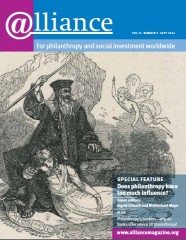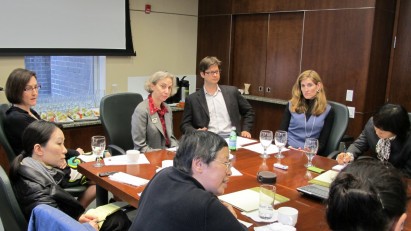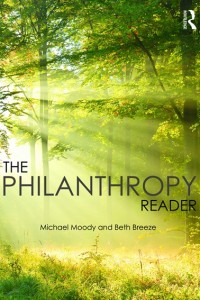Does philanthropy have too much influence?
The September 2016 edition of Alliance looks at the rise of philanthropic influence. In recent years, foundations have used their resources to effect change on diverse issues, a cause of satisfaction to those who see philanthropic impact as a holy grail (and to those who are sympathetic to the changes achieved). To guest editors Ingrid Srinath and Bhekinkosi Moyo in India and South Africa, philanthropy is an underused commodity. They paint a picture of hopes that more wealthy citizens will not only contribute their wealth but also empower civil society.
But should countries with emerging philanthropic capacity be careful what they wish for? Could something that seems desirable today become a source of harm in the future? Indian philanthropist Rohini Nilekani shares her concerns in an interview with Alliance editor Charles Keidan.
Ultimately, philanthropy’s influence depends on its freedom to operate, which in turn rests on the disposition of government and citizens. Alliance debates how ‘free’ philanthropy ought to be and how it should be managed and regulated.
The September 2016 edition also features an interview with Melissa Berman, president of Rockefeller Philanthropy Advisors, and an analysis of why private banks offer advice on philanthropy. Finally, op-eds from Ewa Kulik-Bielińska and Timothy Ogden highlight the gathering storm for liberal civil society in Poland and philanthropy’s response to the water crisis in Flint, Michigan.



























